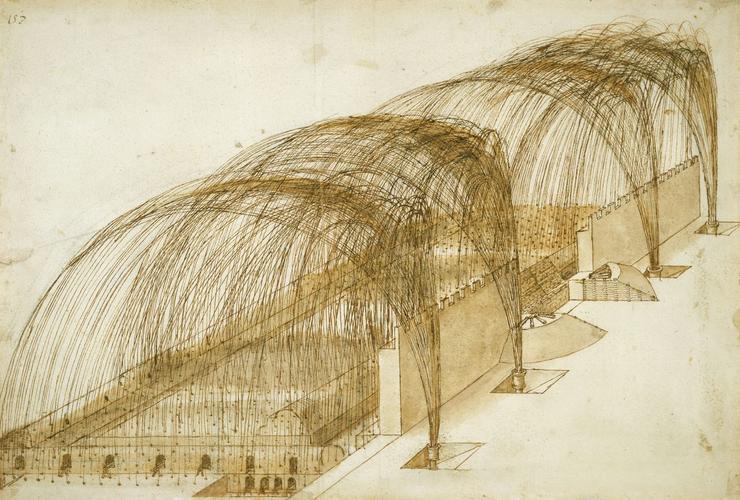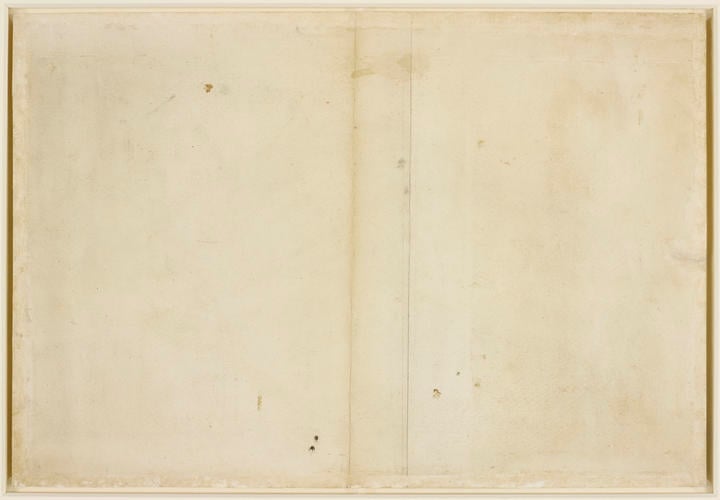-
1 of 253523 objects
Mortars firing into a fortress c.1503-4
Black chalk, pen and ink, wash | 32.9 x 48.0 cm (sheet of paper) | RCIN 912275
-
A large, formal drawing showing how a fortress wall may be breached and the bailey within subdued. Four mortars outside the walls rain stones into the fortress, while a section of wall has been undermined and has fallen into an inner ditch. Cannon placed on earthworks either side of the breach direct their fire into the fortress. Inscribed, upper left corner, Melzi's number 187.
A rougher drawing of the same subject is found on 912337 verso (with drawings on the recto from the time of Leonardo's early work on the Battle of Anghiari, and thus c.1503-4); another is in Leonardo's collection of papers in the Biblioteca Ambrosiana, Milan, Codex Atlanticus fol. 24r-a. The intention of all these drawings can be understood through the explanatory notes on both those other drawings, and further notes on Codex Atlanticus fol. 360v-a. As Leonardo explains, two vertical cuts have been made in the wall 200 braccia (400 feet/120 metres) apart, and a horizontal cut between the two, six braccia (12 feet/3.6m) from the ground. All along the horizontal cut, props have been placed to sustain the incised section, with charges of explosive to be ignited simultaneously. The explosion will cause the wall to collapse into the ditch (the mechanical principles are explained in Codex Atlanticus fol. 24v-a).
The fort is of a type recommended by Machiavelli (The Art of War, book vii), with the ditch inside rather than outside the curtain wall, and the operation illustrated here was adopted by Ludovico Sforza in his attempt to recapture the city of Novara in 1500. Leonardo elaborates on Ludovico's system, with additional earthworks for artillery either side of the breach in the wall. Leonardo had a longstanding interest in military theory, and may have considered writing an illustrated treatise on the subject. The vulnerability of the high medieval curtain wall to cannon fire, following the introduction of gunpowder to Europe in the fifteenth century, led to the development of low, thick ramparts, with projections (bastions) to allow defensive fire in all directions.Provenance
Bequeathed to Francesco Melzi; from whose heirs purchased by Pompeo Leoni, c.1582-90; Thomas Howard, 14th Earl of Arundel, by 1630; probably acquired by Charles II; Royal Collection by 1690
-
Creator(s)
Acquirer(s)
-
Medium and techniques
Black chalk, pen and ink, wash
Measurements
32.9 x 48.0 cm (sheet of paper)
Other number(s)
RL 12275Alternative title(s)
Mortars bombarding a fortress

